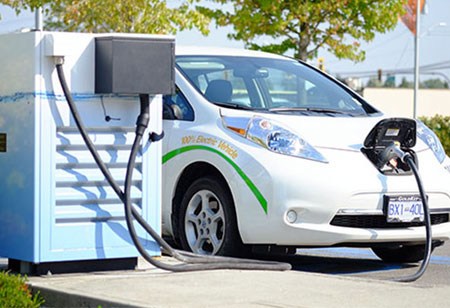THANK YOU FOR SUBSCRIBING
THANK YOU FOR SUBSCRIBING
Be first to read the latest tech news, Industry Leader's Insights, and CIO interviews of medium and large enterprises exclusively from Auto Tech Outlook

By
Auto Tech Outlook | Tuesday, August 27, 2019
Stay ahead of the industry with exclusive feature stories on the top companies, expert insights and the latest news delivered straight to your inbox. Subscribe today.
With the electric vehicle manufacturing increasing, experts forecast nickel demands to multiply 16 times by 2030, with half of that expected to go into batteries.
FREMONT, CA: Nickel has long been widely used in batteries and the longer-lasting nickel-metal hydride rechargeable batteries. Nickel is making a vital contribution to the lithium-ion (Li-ion) batteries that power much of the electric vehicle revolution. Nickel is used in every electric vehicle battery because it helps to deliver higher energy density and greater storage capacity at a lower cost.
Nickel is fundamental to the development of the electric vehicle market because it is the most crucial element in increasing a battery’s energy density, which determines battery power and endurance. Nickel enables the cells to last longer and be less susceptible to thermal runaway.
Battery producers and electric automakers are concerned over longer-term supplies of Nickel. Nickel is a crucial material for electric vehicle (EV) battery. There is a chance of facing a supply crunch by the industries.
Nickel is considered as the secret driver of the battery revolution because of the advantages it has over other materials. Nowadays, Nickel makes up 33.3 percent of the battery, but its concentration will increase in the future because it can greatly increase energy density. It contains only mild toxins, so it is eco-friendly. Nickel has the potential for higher energy densities and is less prone to memory than the Ni-Cd.
Many industries use Nickel for different purposes. Metal is used because of better corrosion resistance, excellent toughness, more strength at high and low temperatures, and a range of special magnetic and electronic properties. Nickel is used for alloying elements, coatings, batteries, and some other uses, medical equipment, such as kitchen wares, transport, buildings, and jewellery. The top seven most important drivers are mentioned below:
1. Manufacturing of batteries: Nickel is used to making several rechargeable battery systems used in electronics, transport, and power tools. The NMC and NCA batteries contain more Nickel (about 30% to 50%). Batteries currently uses 4-5 percent of nickel .
2. Alloy element: Nickel can alloy with many other metals to make stainless steels. The elements like irons, copper, lead, aluminium, cast irons, manganese, carbon, silicon and other metals can alloy with Nickel. These alloys are used in different industries like shipbuilding, aviation, the chemical industry, electronics, medicine and many more.
3. Home appliances: Many of the home appliances are made of Nickel, so many families use them to furnish their homes. In this way the demand for Nickel increases.
4. Steel industry: Nickel is used to making stainless steel; it is estimated that steel industries utilize about 65% of Nickel. Nickel also reduces the toughness of the steel.
Nickel demand to surge tenfold by 2030 because of the mass production of electric vehicles. EV space requires tonnes of Nickel to meet their need. There is a chance that electric vehicle battery manufacturing sector will make up more than 80% of total lithium demand by 2030. With the growing demand for electric vehicle batteries across the world, there could be a supply crunch of Nickel. The prices are expected to rise with the high applications of Nickel to meet batter requirements. Most Li-ion batteries now depend on Nickel. Nickel Cobalt Aluminium (NCA) and Nickel Manganese Cobalt (NMC) are the most commonly used types.
Check This Out: Top Electric Vehicle Companies
 Copyright © 2025 AutoTech Outlook. All Rights Reserved | Privacy Policy | Subscribe | Sitemap | About us | Feedback Policy | Editorial Policy
Copyright © 2025 AutoTech Outlook. All Rights Reserved | Privacy Policy | Subscribe | Sitemap | About us | Feedback Policy | Editorial Policy 



